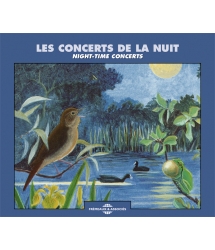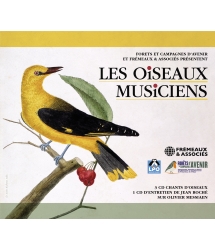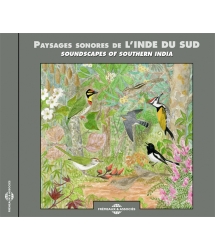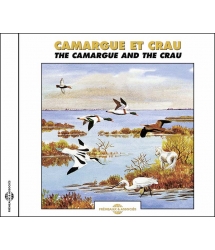- Our Catalog
- Philosophy
- Philosophers of the 20th century and today
- History of Philosophy (PUF)
- Counter-History and Brief Encyclopedia by Michel Onfray
- The philosophical work explained by Luc Ferry
- Ancient thought
- Thinkers of yesterday as seen by the philosophers of today
- Historical philosophical texts interpreted by great actors
- History
- Books (in French)
- Social science
- Historical words
- Audiobooks & Literature
- Our Catalog
- Jazz
- Blues
- Rock - Country - Cajun
- French song
- World music
- Africa
- France
- Québec / Canada
- Hawaï
- West Indies
- Caribbean
- Cuba & Afro-cubain
- Mexico
- South America
- Tango
- Brazil
- Tzigane / Gypsy
- Fado / Portugal
- Flamenco / Spain
- Yiddish / Israel
- China
- Tibet / Nepal
- Asia
- Indian Ocean / Madagascar
- Japan
- Indonesia
- Oceania
- India
- Bangladesh
- USSR / Communist songs
- World music / Miscellaneous
- Classical music
- Composers - Movie Soundtracks
- Sounds of nature
- Our Catalog
- Youth
- Philosophy
- News
- How to order ?
- Receive the catalog
- Manifesto
- Dictionnary











- Our Catalog
- Philosophy
- Philosophers of the 20th century and today
- History of Philosophy (PUF)
- Counter-History and Brief Encyclopedia by Michel Onfray
- The philosophical work explained by Luc Ferry
- Ancient thought
- Thinkers of yesterday as seen by the philosophers of today
- Historical philosophical texts interpreted by great actors
- History
- Books (in French)
- Social science
- Historical words
- Audiobooks & Literature
- Our Catalog
- Jazz
- Blues
- Rock - Country - Cajun
- French song
- World music
- Africa
- France
- Québec / Canada
- Hawaï
- West Indies
- Caribbean
- Cuba & Afro-cubain
- Mexico
- South America
- Tango
- Brazil
- Tzigane / Gypsy
- Fado / Portugal
- Flamenco / Spain
- Yiddish / Israel
- China
- Tibet / Nepal
- Asia
- Indian Ocean / Madagascar
- Japan
- Indonesia
- Oceania
- India
- Bangladesh
- USSR / Communist songs
- World music / Miscellaneous
- Classical music
- Composers - Movie Soundtracks
- Sounds of nature
- Our Catalog
- Youth
- Philosophy
- News
- How to order ?
- Receive the catalog
- Manifesto
- Dictionnary
NATURE’S FOUR SEASONS
Ref.: FA691
EAN : 3448960269124
Artistic Direction : PIERRE HUGUET
Label : Frémeaux & Associés
Total duration of the pack : 1 hours 3 minutes
Nbre. CD : 1
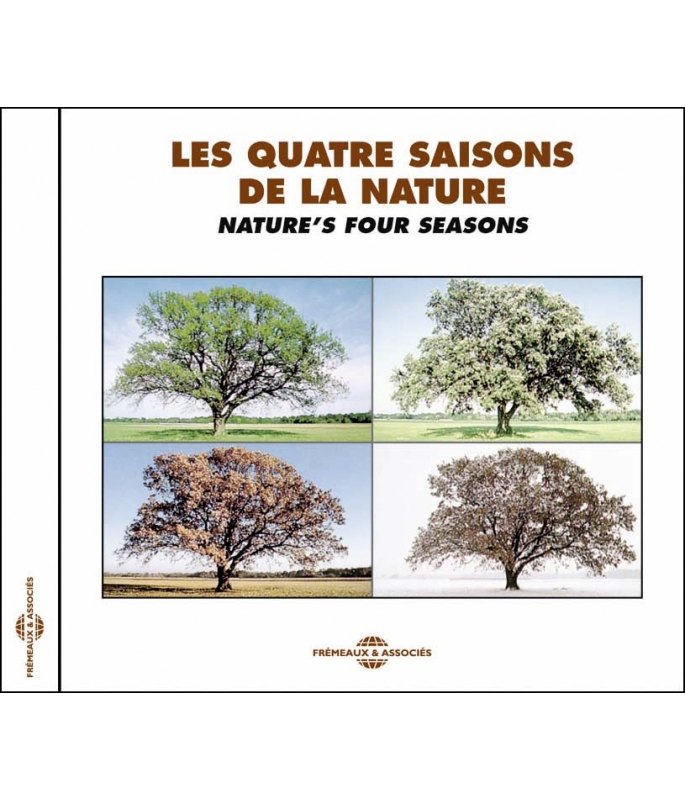
NATURE’S FOUR SEASONS
NATURE’S FOUR SEASONS
As months go by, the sounds of nature change. Sleet, wind, water courses, birds, field crickets, Red deer… interpret the oldest concert in the world. In this album, four movements of 15 minutes each mark the seasons and reveal very different natural soundscapes that vary accordingly. Patrick FRÉMEAUX
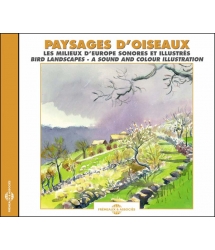
BIRD LANDSCAPES - A SOUND AND COLOUR ILLUSTRATION
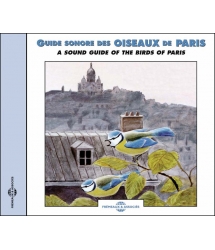
A SOUND GUIDE OF PARIS' BIRDS
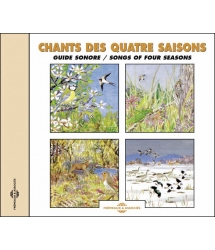
SONGS OF THE FOUR SEASONS
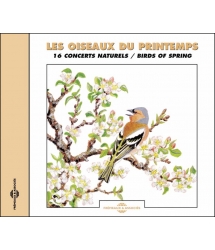
BIRDS OF SPRING




-
PisteTitleMain artistAutorDurationRegistered in
-
1L'hiver décembre: Pinsons du nord, Grimpereaux des jardins, Sitelle torchepotDR00:06:231320879600
-
2L'hiver janvier: 4 espèces de mésangesDR00:02:131320879600
-
3L'hiver février: Troglodyte mignon, Mésanges charbonnières, Mésanges huppées, Mésanges noires, Mésange bleueDR00:05:511320879600
-
4Le printemps mars: Crapauds communs, Grenouilles rousses, Chouette hulotteDR00:08:291320879600
-
5Le printemps avril: Chouette hulotte, Rouge gorgeDR00:00:511320879600
-
6Le printemps mai: Grillons champêtresDR00:02:031320879600
-
7L'été juin: Rouge gorge, Grive musicienne, Chevreuil mâleDR00:04:561320879600
-
8L'été juillet: Faucon hobereau, Fauvette à tête noireDR00:07:161320879600
-
9L'été août: Troglodyte mignonDR00:04:101320879600
-
10L'automne septembre: Cerf élapheDR00:08:121320879600
-
11L'automne octobre: Rouge gorge, Grillons italiens, Corneilles noires, Grand corbeauDR00:08:101320879600
-
12L'automne novembre: Bouvreuil pivoine, Troglodyte, Geai des chênesDR00:04:301320879600
LES quatre SAISONS DE LA NATURE
LES quatre SAISONS DE LA NATURE
NATURE’S FOUR SEASONS
L’HIVER (1 à 3)
1 Décembre : des milliers de Pinsons du nord (Fringilla montifringilla) ont passé la nuit dans les arbres. Au petit matin, dans le tumulte de leur pépiement, ils s’envolent par troupes ressemblant à des essaims d’abeilles géantes. Semblant indécis, ils exécutent des arabesques. Ce sont alors des milliers de paires d’ailes qui battent vigoureusement et font vibrer l’air à chaque changement de direction. Après leur départ, des Grimpereaux des jardins (Certhia brachydactyla) et une Sittelle torchepot (Sitta europaea) poussent des petits cris de contact. La forêt, glaciale, semble presque vide.
2 Janvier : dans la petite clairière, quatre espèces de mésanges inspectent les bosquets. Elles avancent en petites troupes de quatre à cinq individus, vraisemblablement frères et sœurs de la dernière nichée. Le gel perdure depuis six semaines.
3 Février : depuis deux jours, le temps est anormalement doux pour la saison. Cela déclenche les chants territoriaux du Troglodyte mignon (Troglodytes troglodytes) des Mésanges charbonnières (Parus major), Mésanges huppées (Parus cristatus), Mésanges noires (Parus ater) et de la Mésange bleue (Parus caeruleus).
LE PRINTEMPS (4 à 6)
4 Mars : la fonte des neiges et les grosses pluies du début du mois ont regarni les mares de la clairière. A la tombée de la nuit, des Crapauds communs (bufo bufo) et les mâles des Grenouilles rousses (Rana temporaria) guettent l’arrivée des femelles. Ils ont, pour certains, parcouru plusieurs kilomètres pour venir se reproduire ici. Un couple de Chouette hulotte (strix aluco) se poursuit d’arbre en arbre.
5. Avril : à présent les mares débordent l’une dans l’autre. Le mâle du couple de Chouette hulotte (Stric aluco) après quelques ululements classiques, répond par de douces roucoulades au cri strident de la femelle. Dès les premières lueurs, le Rouge-gorge (Erithacus rubecula) ouvre le grand concert du printemps, mêlant sa voix à celle des merles, grives, pouillots, ramiers, pies, mésanges, etc.
6 Mai : au mois finissant, le concert du matin perd sa densité : bien des espèces nourissent leurs couvées affamées. En soirée, les premiers Grillons champêtres (Grillus campestris) annoncent l’arrivée des premières chaleurs.
L’ÉTÉ (7 à 9)
7 Juin : les mares ne laissent plus échapper qu’un mince filet d’eau. Le Rouge-gorge (Erithacus rubecula) et la Grive musicienne (Turdus philomelos) accompagnent la tombée du jour et ce n’est qu’à la nuit noire qu’un Brocard ou Chevreuil mâle (Capreolus capreolus) aboie, inquiété par une présence qu’il ne situe pas (je suis caché !). L’odeur des foins descend des prairies qui dominent la forêt.
8 Juillet : abeilles et bourdons butinent les ronciers en fleurs qui bordent la clairière. Ils emplissent la forêt d’une rumeur typiquement estivale. Un Faucon hobereau (Falco subbuteo) rejoint son nid avec une proie dans les serres, excitée sa femelle l’appelle. Cachée par la densité du feuillage, une Fauvette à tête noire (Sylvia atricapilla) chante sous le nid du rapace.
9 Août : le Troglodyte mignon (Troglodytes troglodytes), les fauvettes, la grive musicienne et le ramier, sont parmi les derniers oiseaux à chanter en été. Dès le mois d’août, de nombreuses espèces ne font plus qu’émettre les cris de contact qu’elles garderont jusqu’au printemps prochain. Les jeunes faucons hobereaux ont quitté leur nit et quémandent leur nourriture en geignant sous l’orage. Leurs parents cherchent à les amener dans le ciel pour qu’ils apprennent à chasser les proies qu’ils lâchent pour eux dans le vide.
L’AUTOMNE (10 à 12)
10 Septembre : dans la nuit, des pas s’agitent, des plaintes mystérieuses et lointaines résonnent de toute part, c’est le brame du Cerf élaphe (Cervus elaphus).
11 Octobre : c’est la fin de la période de brame. Le Rouge-gorge (Erithacus rubecula) par son cliquetis nerveux marque le levé du jour. La gelée blanche a fait taire les derniers Grillons italiens (Oecanthus pellucens) qui, cette année de sècheresse, ont chanté jusque très tard dans la saison. Une charogne attire des Corneilles noires (Corvus corone corone) et un Grand corbeau (Corvus corax).
12 Novembre : le vent, le grésil, le gel rendent la nature hostile. Les journées sont courtes, les oiseaux ne pensent plus qu’à se nourrir. Cris de contact de diverses mésanges, appel flûté et doux du Bouvreuil pivoine (Pyrrhula pyrrhula), voix acide et tonitruante du Troglodyte (Troglodytes troglodytes), imitations diverses produites par deux Geai des chênes (Garrulus glandarius) clôturent le concert des quatre saisons.
Pierre Huguet (p) 1994 PITHYS - 2011 FRÉMEAUX & ASSOCIÉS
© 2011 GROUPE FRÉMEAUX COLOMBINI SAS
Dessin de couverture : Sylvie Cordier
Intérieur du livret illustré par Alexis NOUAILHAT
Enregistrement digital réalisé par Pierre Huguet sur quatre ans (1989-1992) en forêt des Chambaran au lieu dit “Le Plâtre” et dans le “Parc Naturel Port Revel” (38870 - Saint-Pierre de Bressieux). Remerciements à : Madame et Monsieur Rocher, qui m’ont aimablement accueilli dans le Parc Naturel, ainsi qu’à Madame et Monsieur Glasser, qu’il m’ont ouvert leur domaine des Hospices de Brion. Post-production et textes : Pierre Huguet.
english notes
WINTER (1 to 3)
1 December: thousands of Bramblings (Fringilla montifringilla) have spent the night in the trees. In the early morning, in the midst of the tumult caused by their chirping, they fly off in groups, like a swarm of giant bees. Seemingly undecided, they form crazy patterns in the sky. Thousands of pairs of wings beat the air vigorously, each change of direction marked by even more intense vibration.
2 January: in the small clearing four species of tit inspect the bushes. They move forward in groups of four or five, in all probability brothers and sisters from the same nest. The frost has lasted for six weeks now.
3 February: for the last two days, the weather has been unusually mild for the time of year, triggering a searies of territorial songs from a Wren (Troglodytes troglodytes), some Great Tits (Parus major), Crested Tits (Parus cristatus), Coal Tits (Parus ater) and Blue Tits (Parus caeruleus).
SPRING (4 to 6)
4 March: the melting snow and the heavy rain at the beginning of the month have filled the ponds on the floor of the clearing. As night falls some Common Toads (Bufo bufo) and some male Common Frogs (Rana temporaia) await the arrival of the females. Some of them have travelled several kilometres in order to reproduce here. A couple of Tawny Owls (Stric aluco) chase each other through the trees.
5 April: The ponds have spread, joining in places. The male, from the Tawny Owl (Strix aluco) couple, after making several typical hoots, answers the strident cry of the female with a gentle cooing sound. At first light a Robin (Erithacus rubecula) launches the spring concert, joining the blackbirds, thrushes, warblers, wood pigeons, magpies, tits and so on.
6 May: as the end of the month approaches, the morning concert grows less dense: many species are busy feeding their hungry offspring. In the evening the first Field Crickets (Grillus campestris) herald the arrival of the summer heat
SUMMER (7 to 9)
7 June: only a little water now trickles from the ponds. The Robin (Erithacus rubecula) and the song Thrush (Turdus philomelos) sing as night falls, and it is only when complete darkness reigns that a Roe-buck (Capreolus capreolus) barks, worried by a presence which it cannot locate (the author is in a hide!). The smell of hay drifts down from the fields above the forest.
8 July: Bees and bumble-bees buzz themselves with the flowering brambles which border the clearing. They fill the forest with a typical summer hum. A Hobby (Falco subbuteo) returns to its nest, bearing a prey in its claws, and the excited female calls to it. Hidden in the dense foliage, a Blackcap (Sylvia atricapilla) sings below the raptor’s nest.
9 August: the Wren (Troglodytes troglodytes), blackcap, song thrush and wood pigeon are some of the last birds to sing in the summer. From August onwards, many species only make contact calls and this will continue until the following spring. Their parents attempt to lure them into the sky in order to teach them to catch the prey, which they let fall.
AUTUMN (10 to 12)
10 September: footfalls echo through the night, mysterious sounds are heard in the distance: a Red deer (Cervus elaphus) stag is “belling”. The noisy jousting sometimes degenerates into actual fighting but in general the stags turn on the bushes and trees. Belling is undoubtedly one of the most impressive natural sound to be heard in Western Europe.
11 October: The belling season is over. The nervous clicking of the Robin (Erithacus rubecula) marks the dawn. The frost has silenced the last of the Crickets (Oecanthus pellucens) which, in a drought year, have continued to sing very late in the season. Carrion has attracted some Carrion Crows (Corvus corone corone) and a Raven (Corvus corax).
12 November: the wind, hail and frost make a hostile environment. The days are short, and the birds have no time for anything but searching for food. Our concert of the four seasons ends with contact calls by various tits, the gentle call of a Bullfinch (Pyrrhula pyrrhula), the sharp, echoing voice of a Wren (Troglodytes troglodytes) and various imitations produced by two Jays (Garrulus glandarius).
Pierre Huguet (p) 1994 PITHYS - 2011 FRÉMEAUX & ASSOCIÉS
© 2011 GROUPE FRÉMEAUX COLOMBINI SAS
Digital recording made by Pierre Huguet over a four year period (1989-1992) in Chambaran Forest, at “Le Plâtre” and in the “Port Revel” Nature Park (France, 38870, Saint-Pierre de Bressieux). The author’s thanks to Madame and Monsieur Rocher for their warm welcome to the Nature Park, and to Madame and Monsieur Glasser, who opened the park at Hospices de Brion for us. Post-production and texts: Pierre Huguet
CD LES quatre SAISONS DE LA NATURE © Frémeaux & Associés / Droits audio : Frémeaux & Associés - La Librairie Sonore (Producteur initial : Sittelle, Pithys, Collection Allain Bougrain Dubourg ou Ceba) / Ecouter les chants d'oiseaux sur CD : Sons et ambiances naturelles des écosystèmes - Stéreo and digital recording of the natural landscape sound. Natural sound sceneries of écosystems, Voices of the Wild Life. Les droits de cet enregistrement sont protégés par la loi. Pour toute exploitation d’illustration sonore sur CD, DVD, CD-Rom, Télévision, Cinéma, Sites internet, scénographies (théâtre, musées…), l’autorisation et un devis gratuit peuvent être obtenus auprès de Frémeaux & Associés – fax : +33 (0)1 43.65.24.22 info@fremeaux.com
